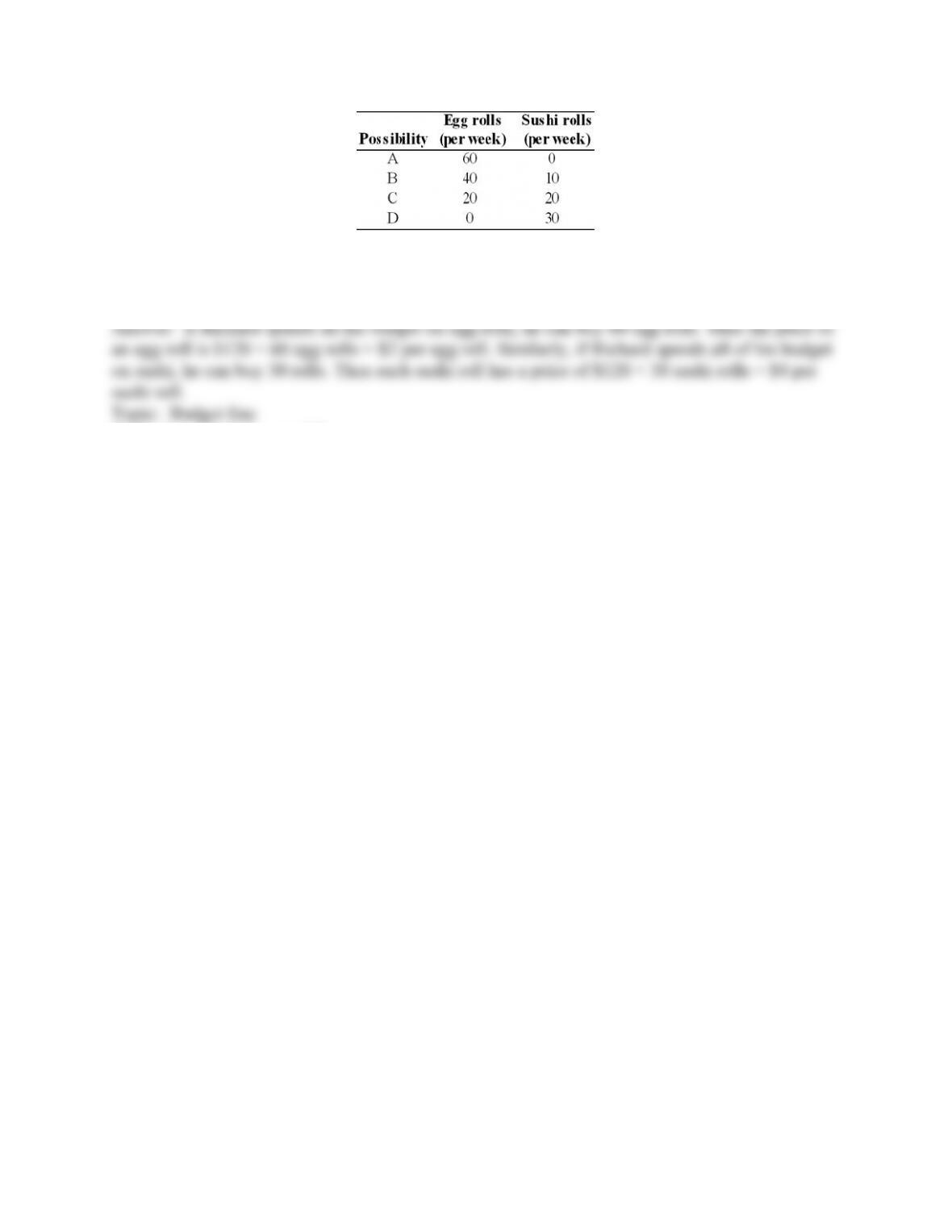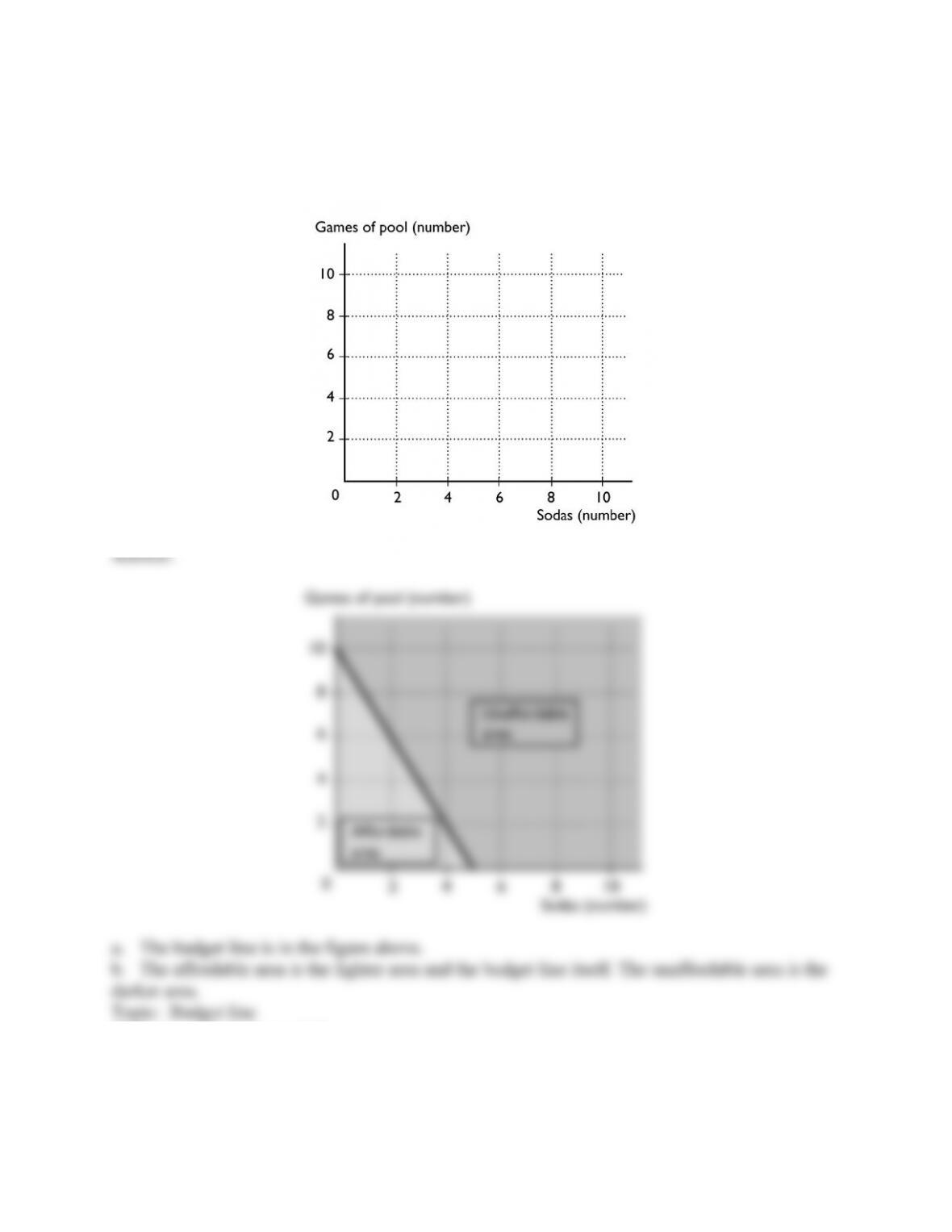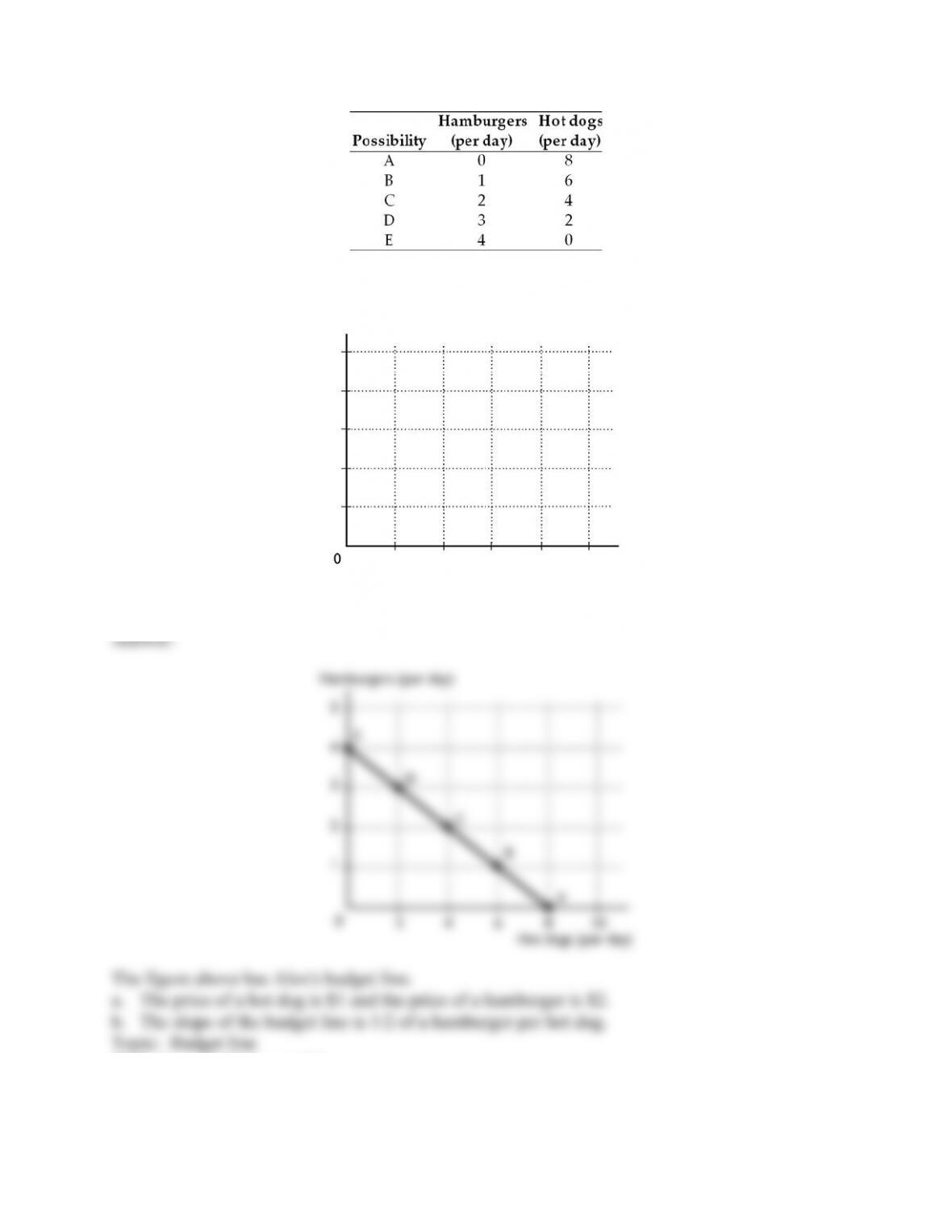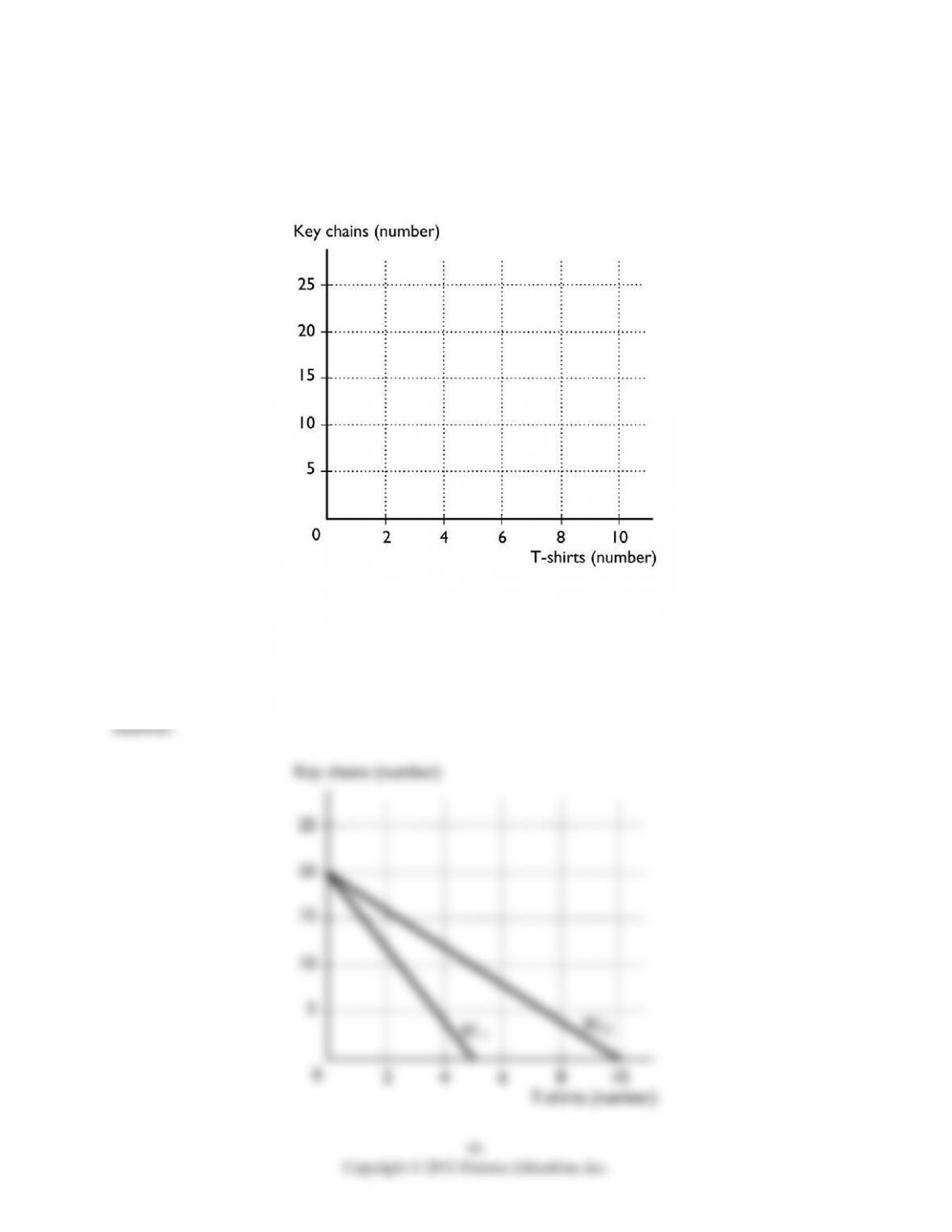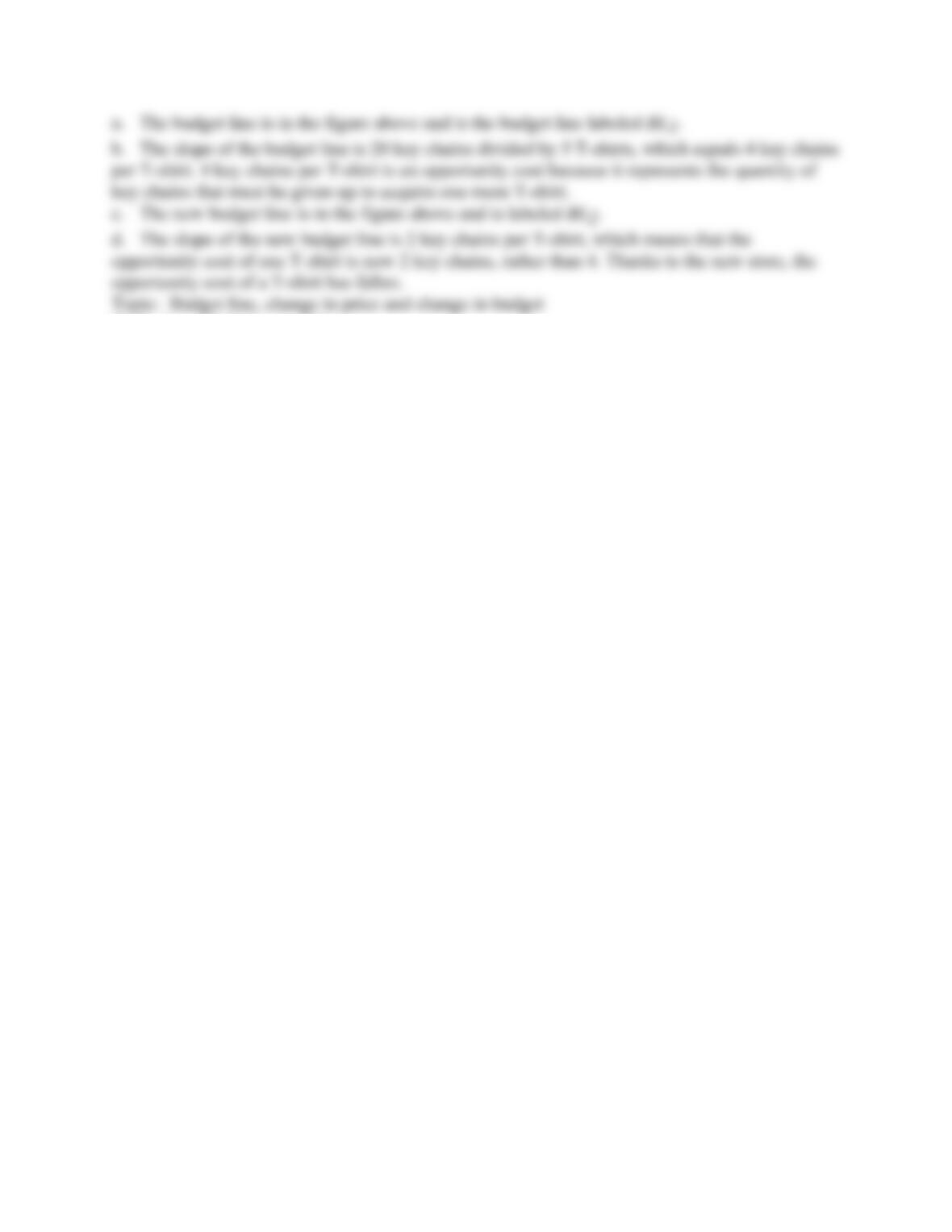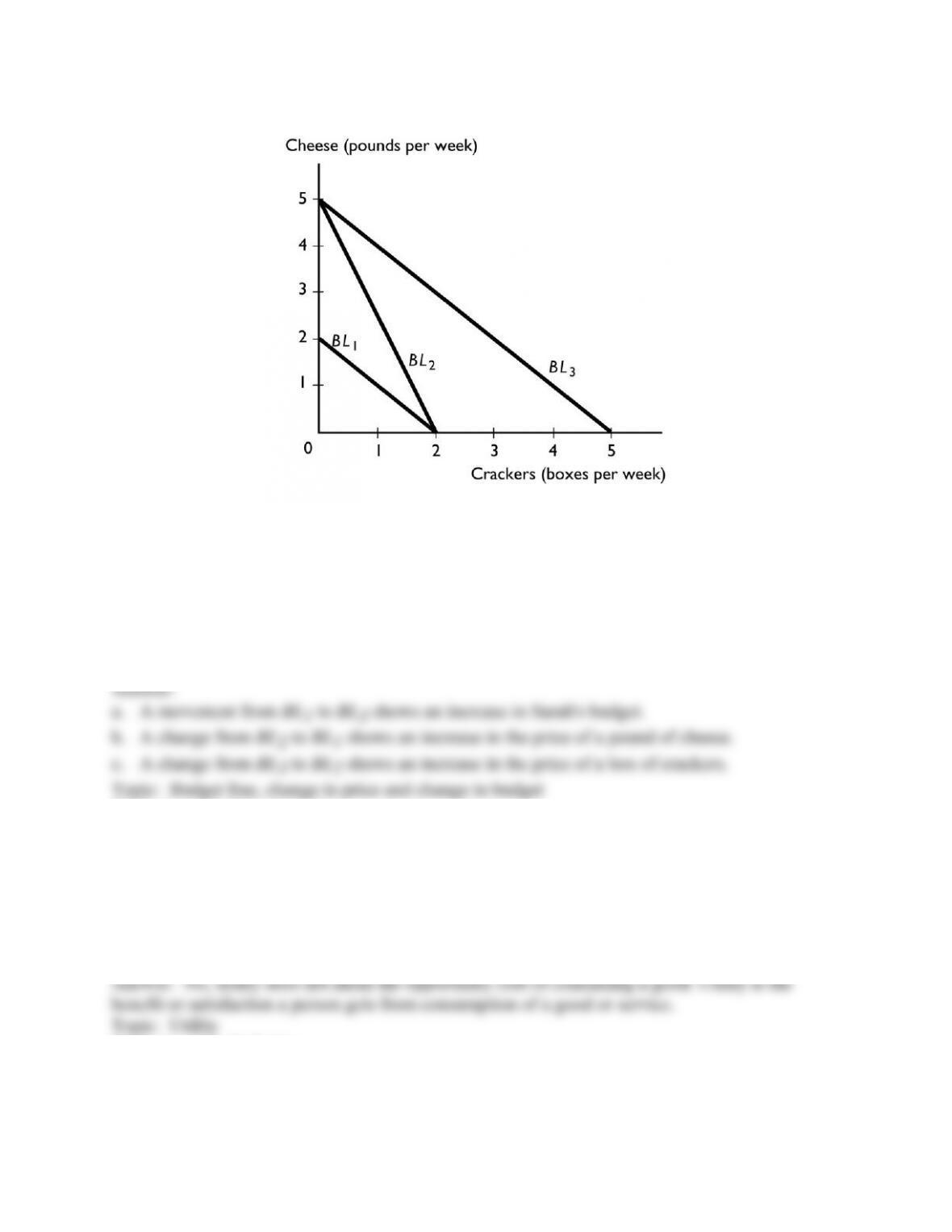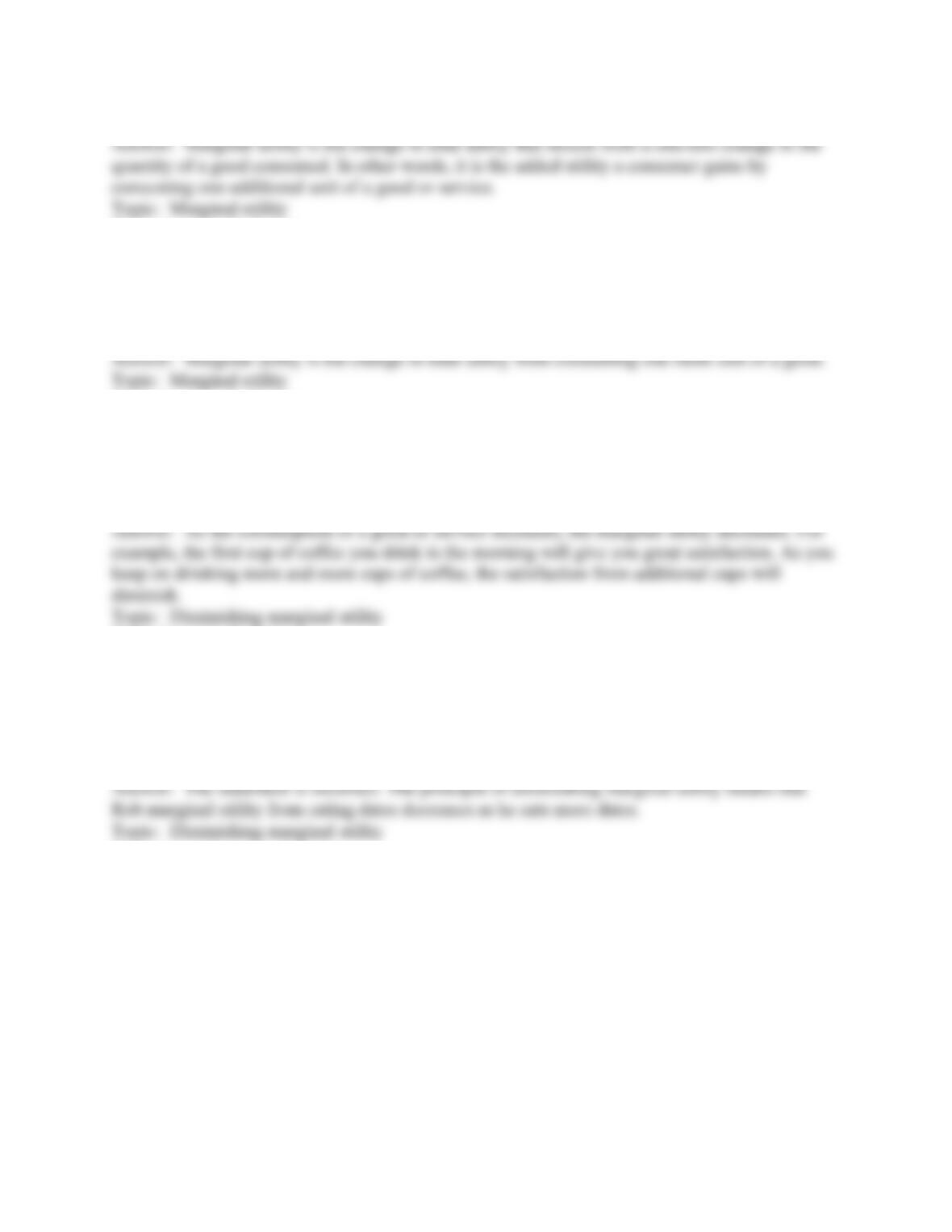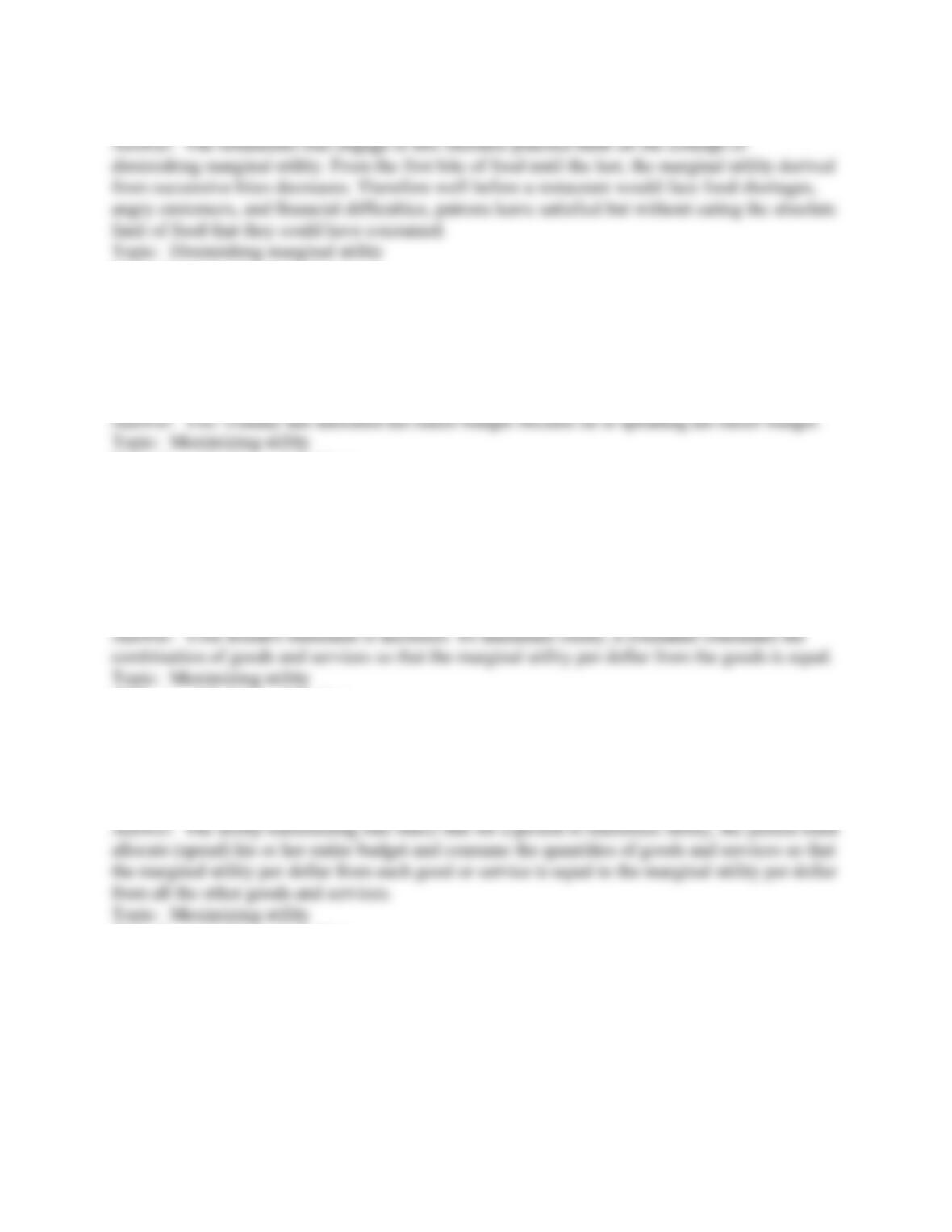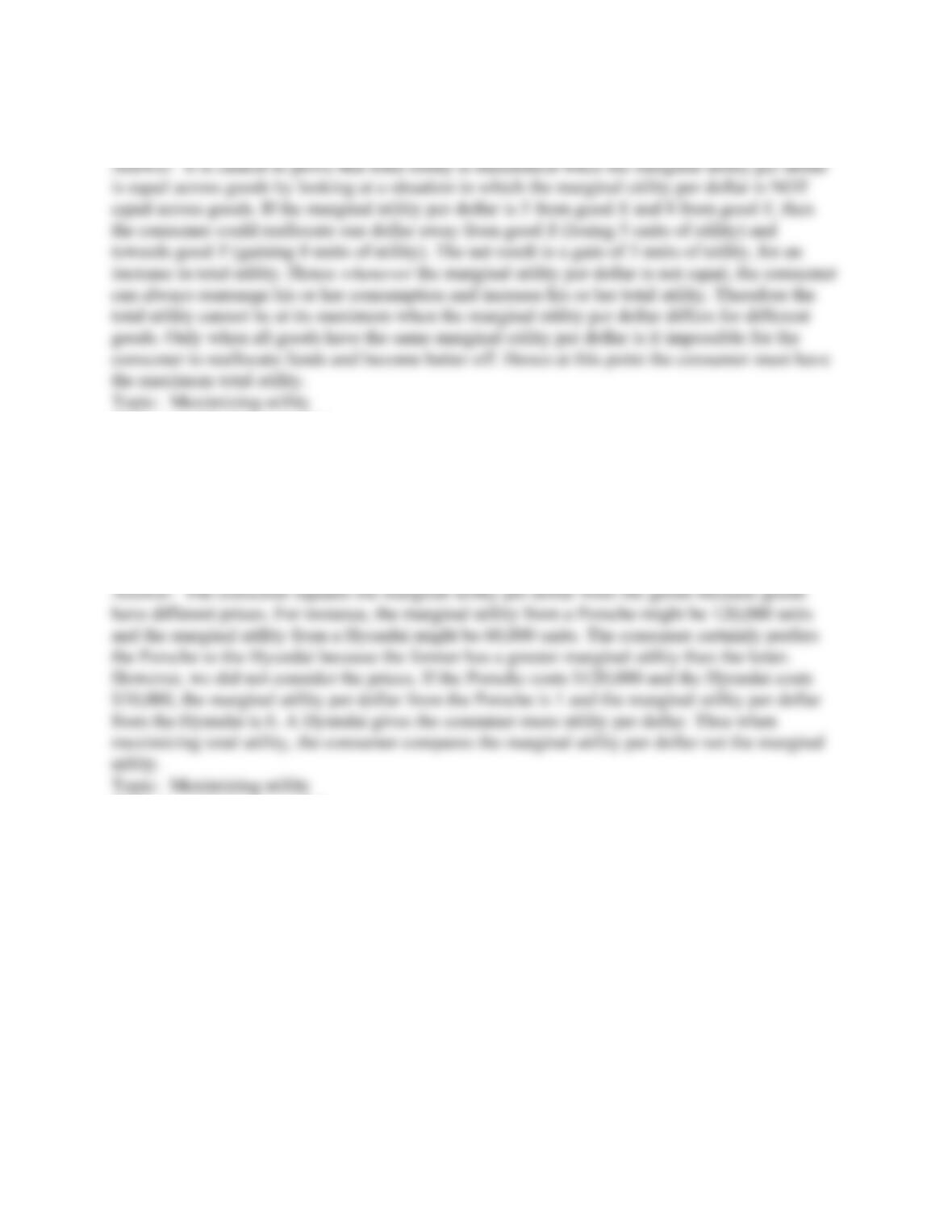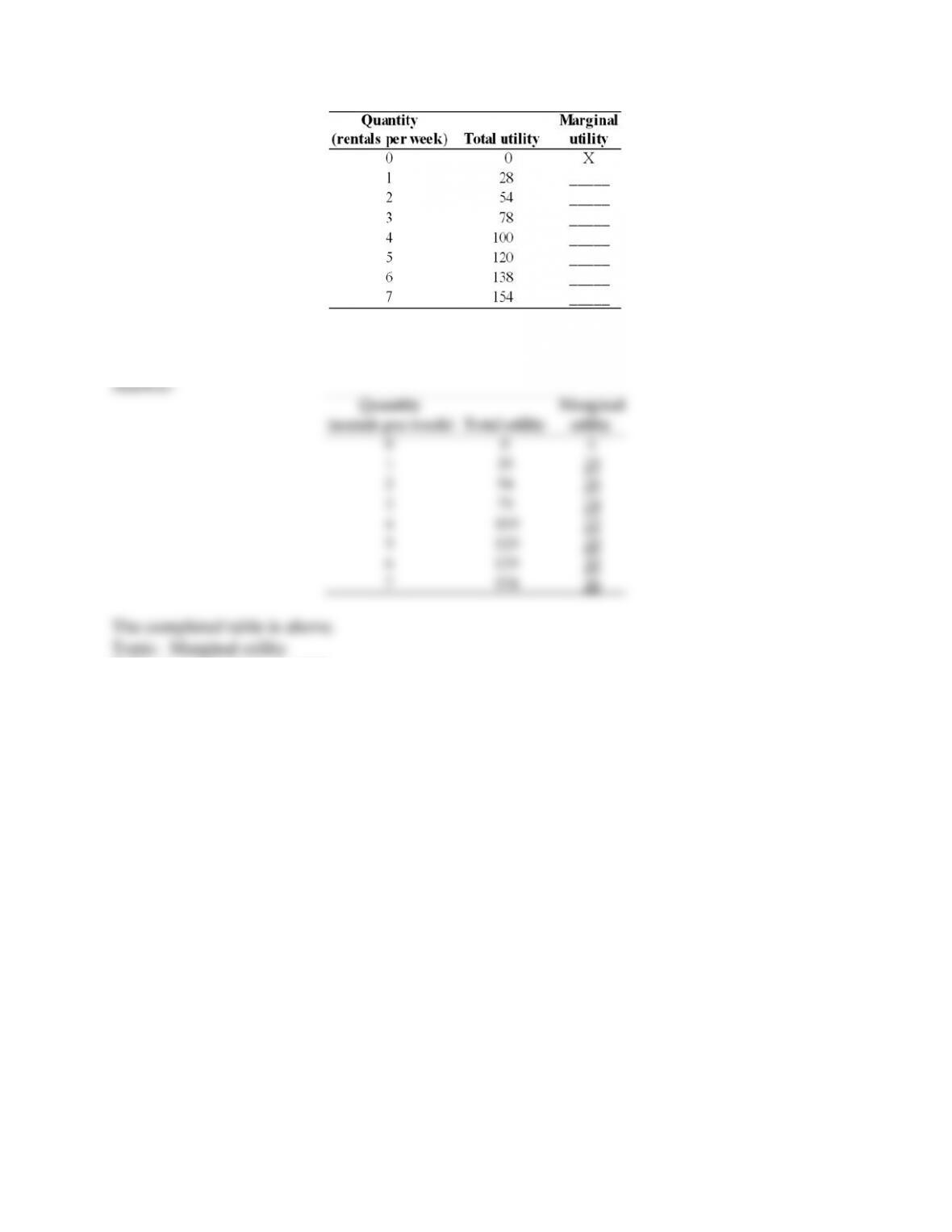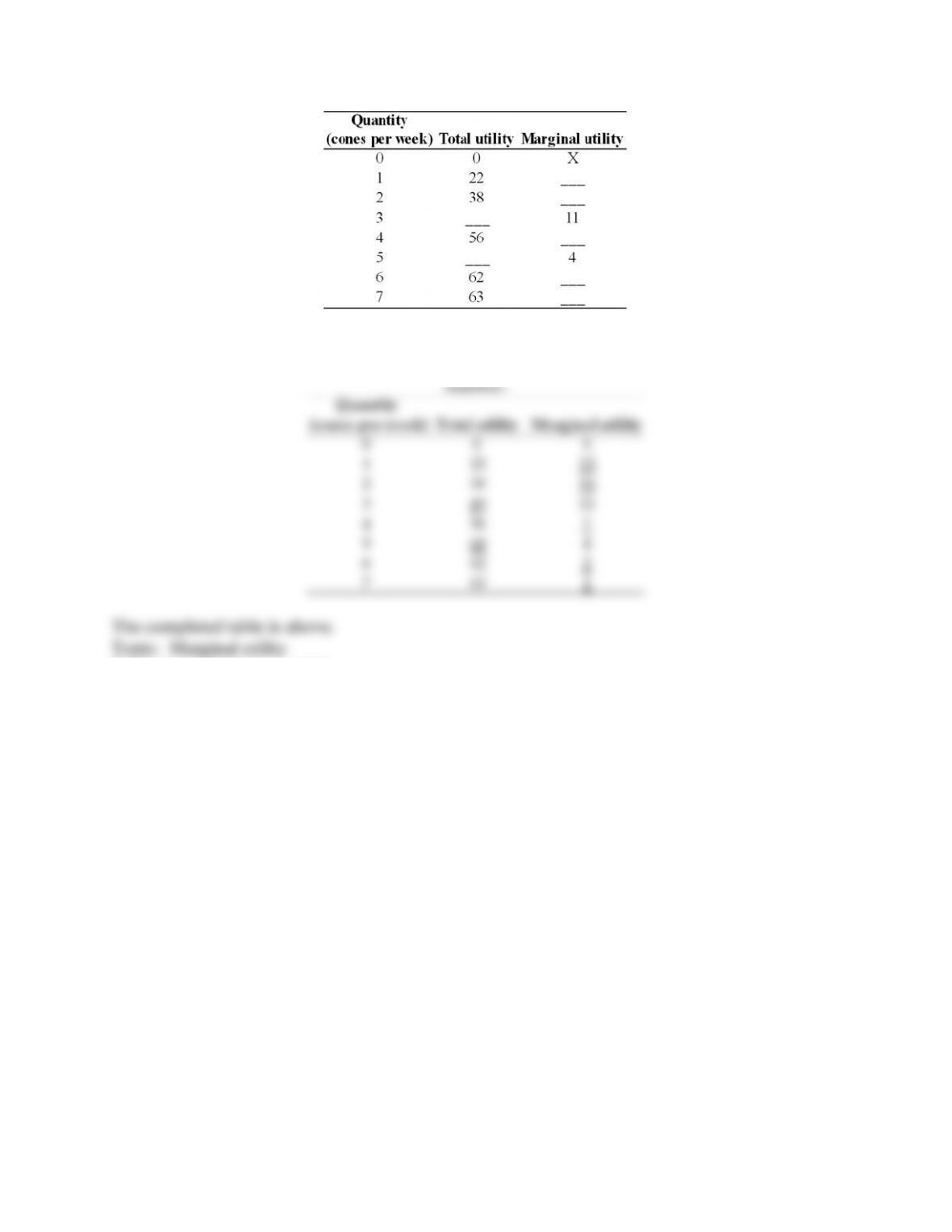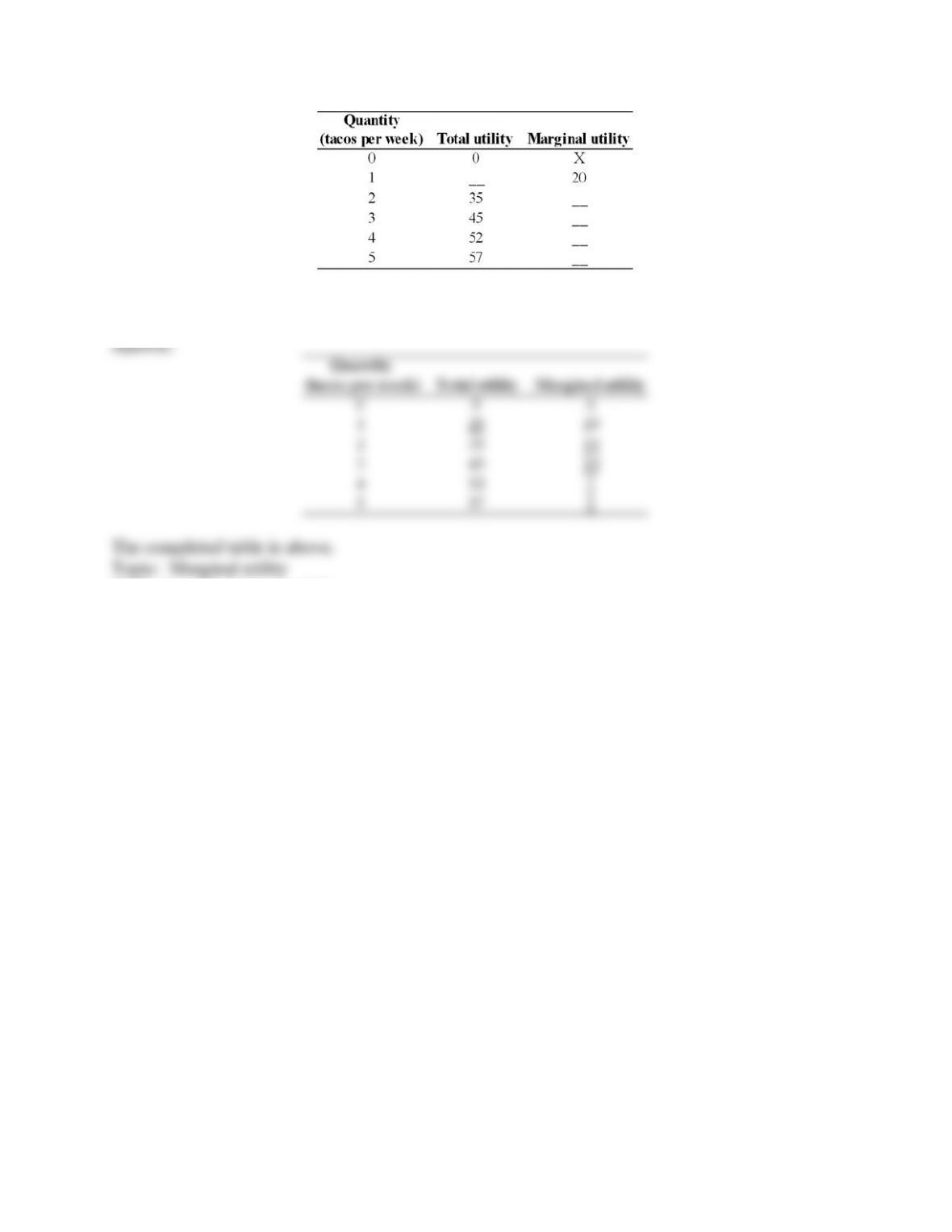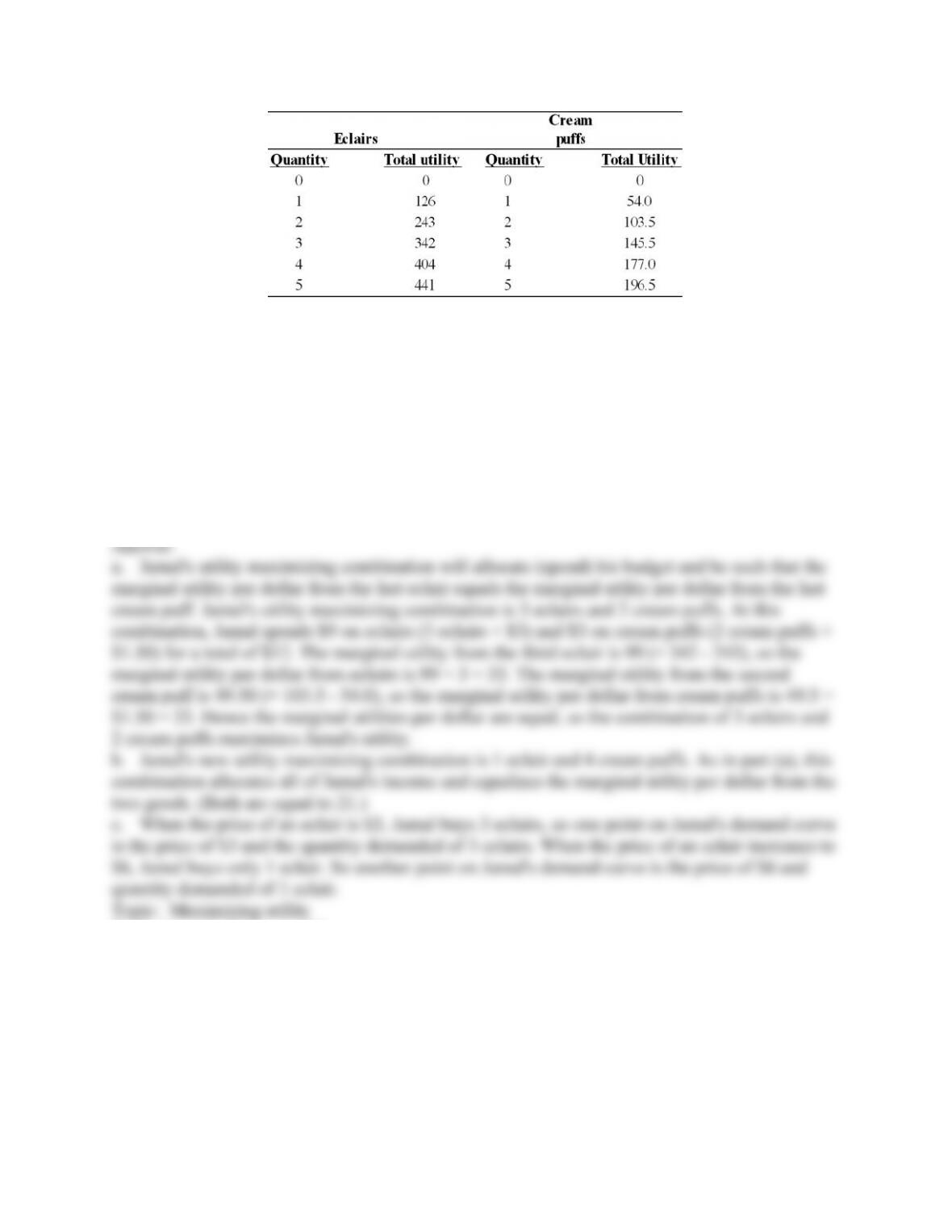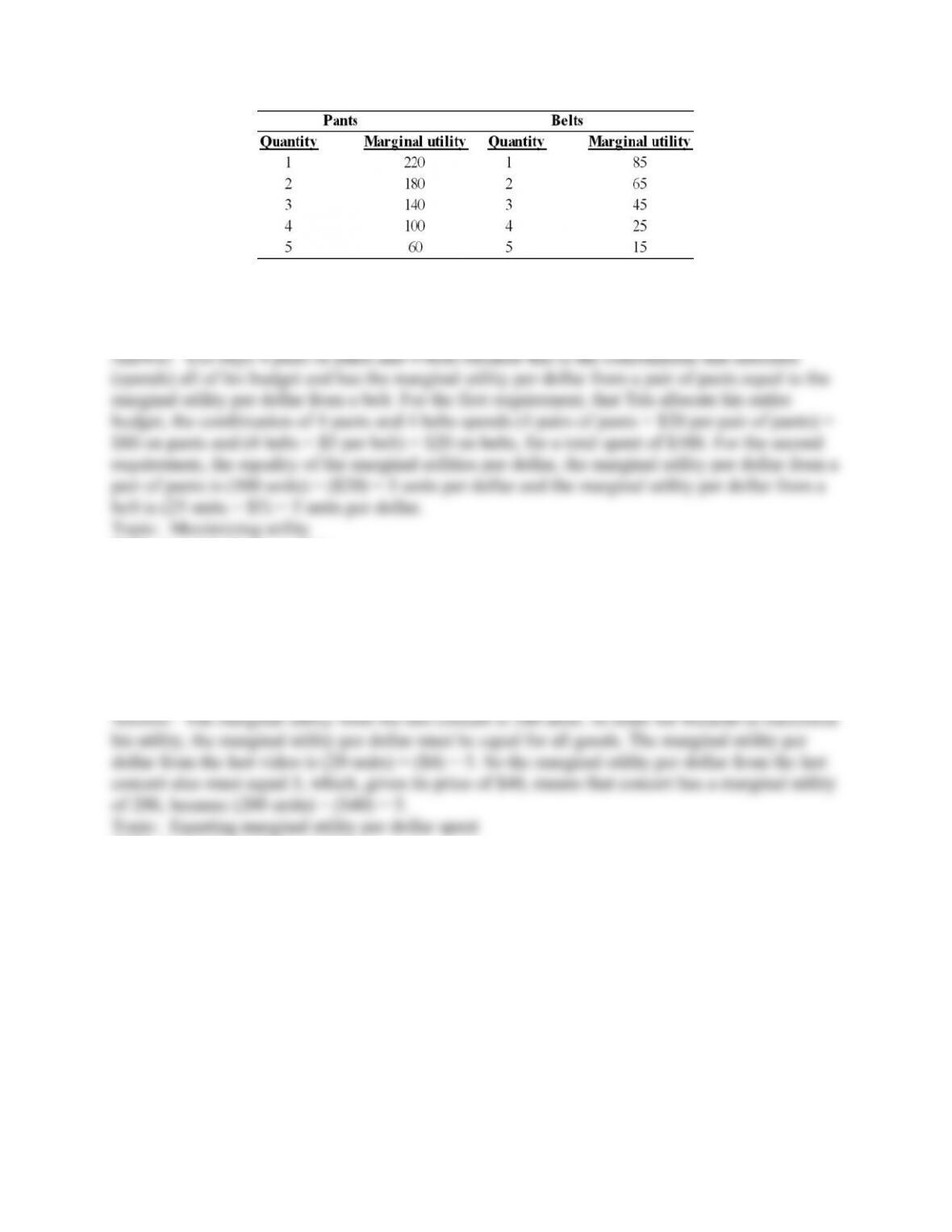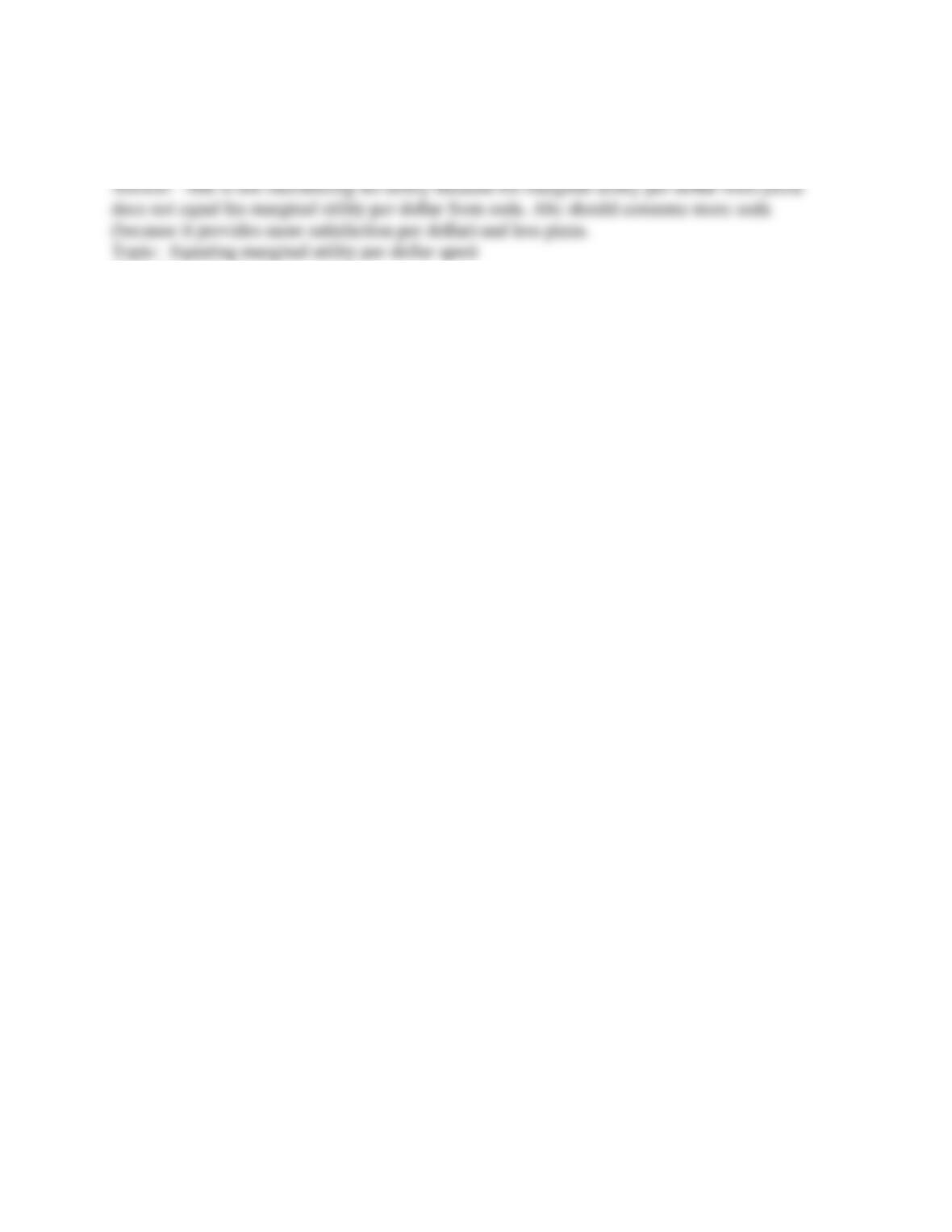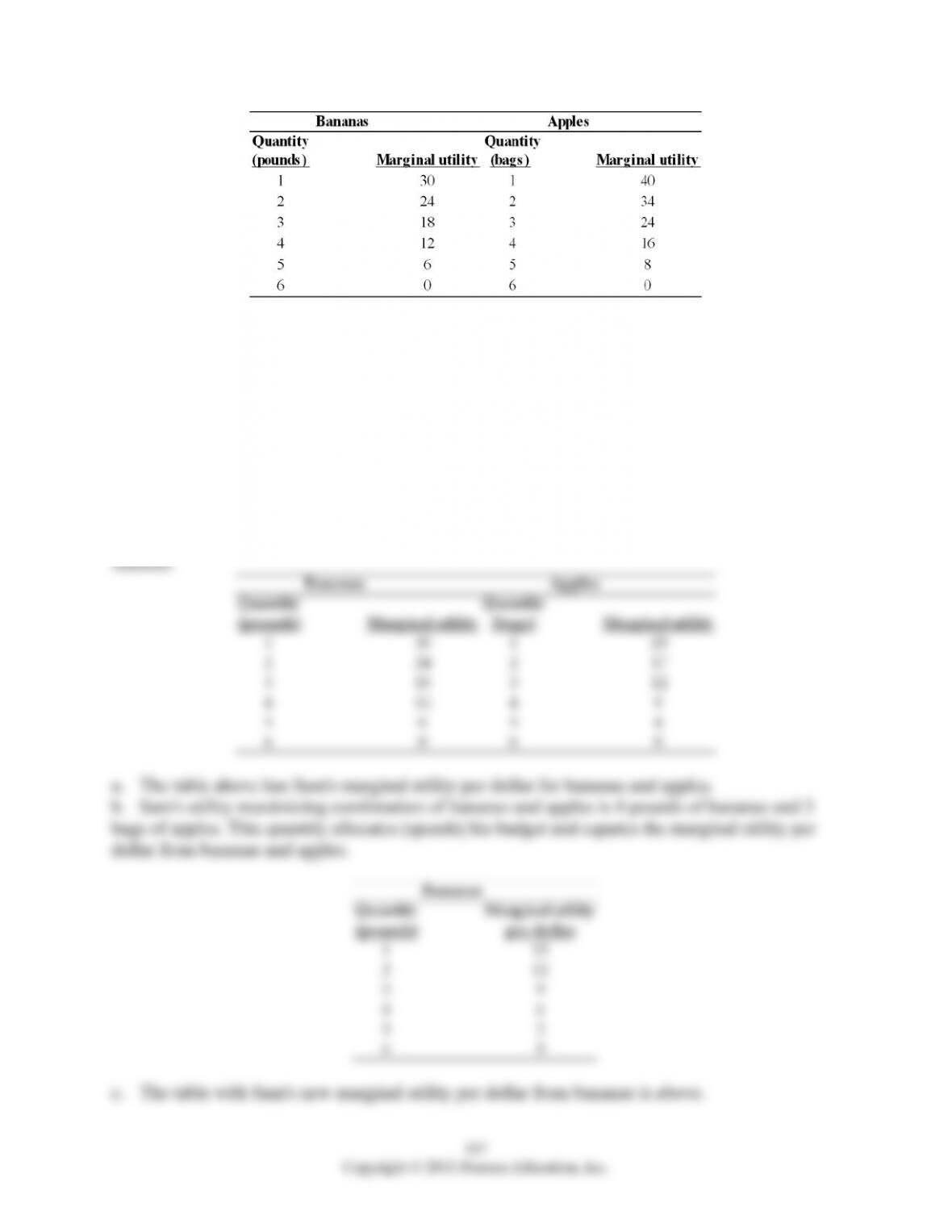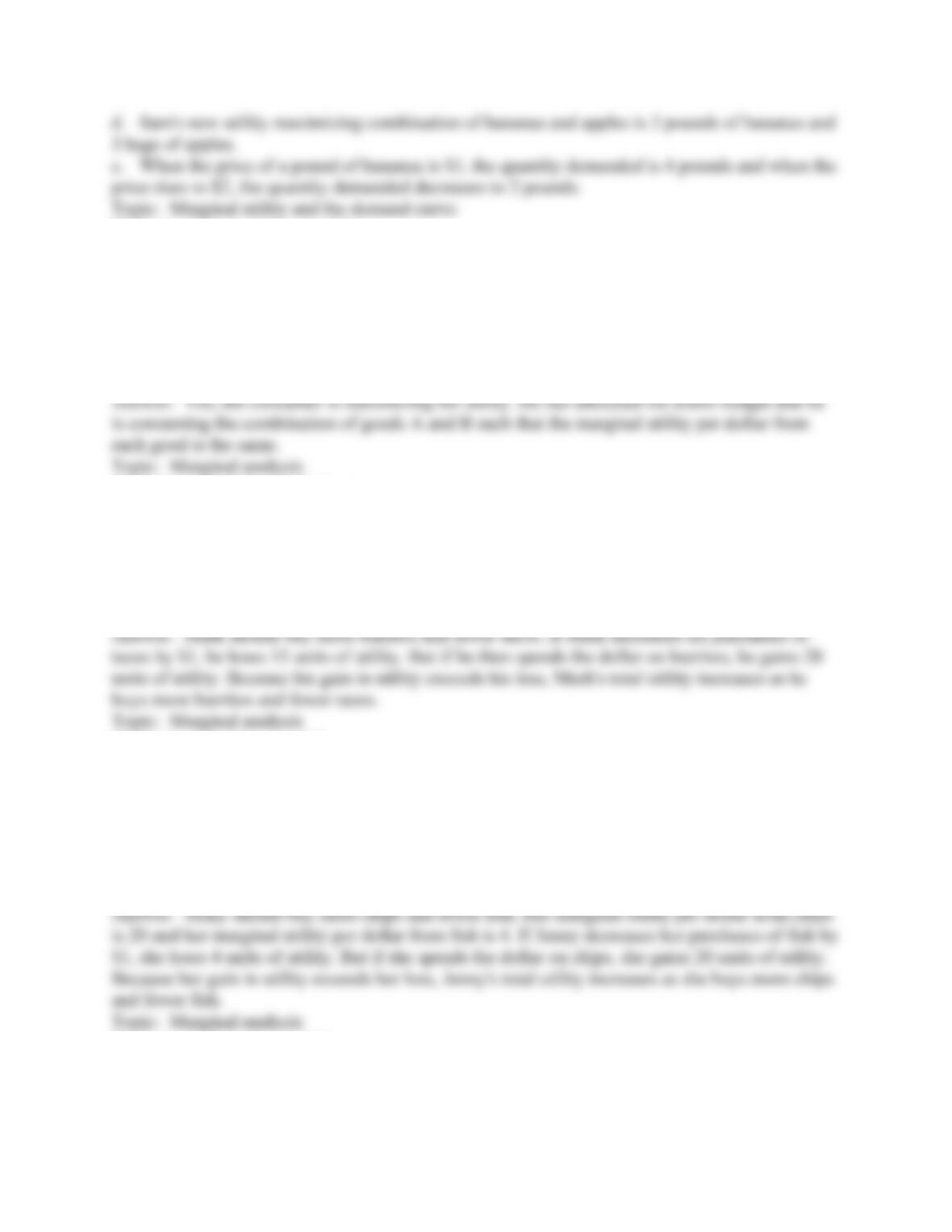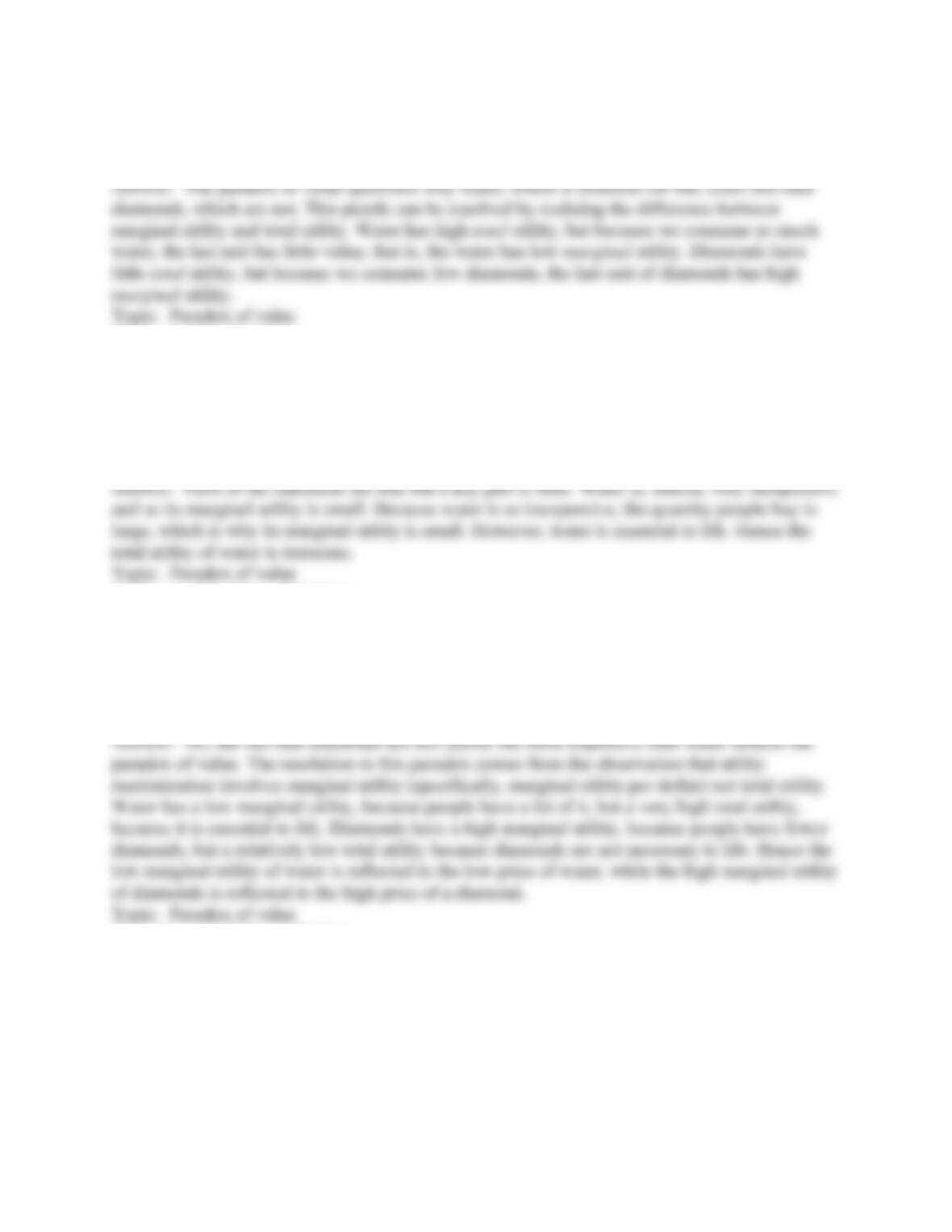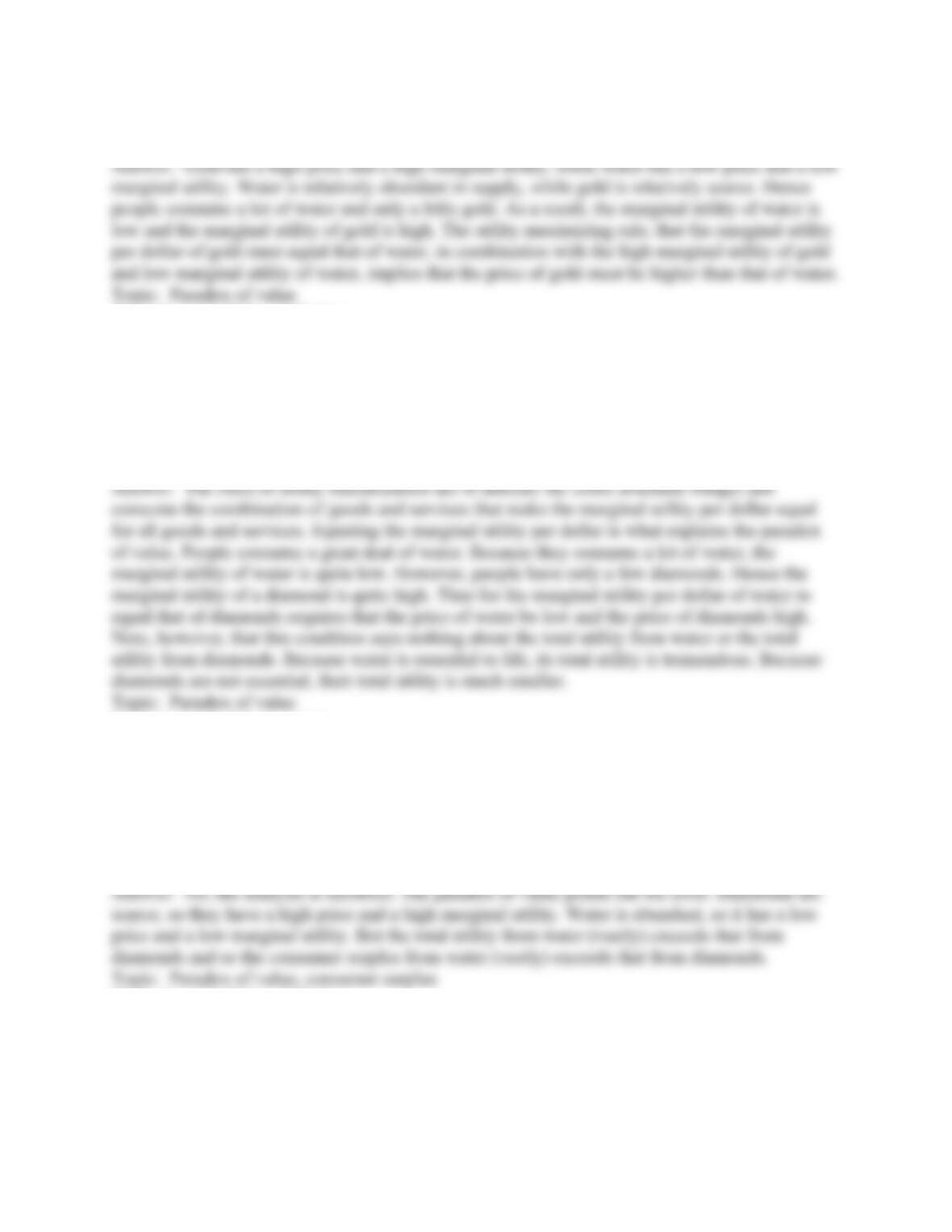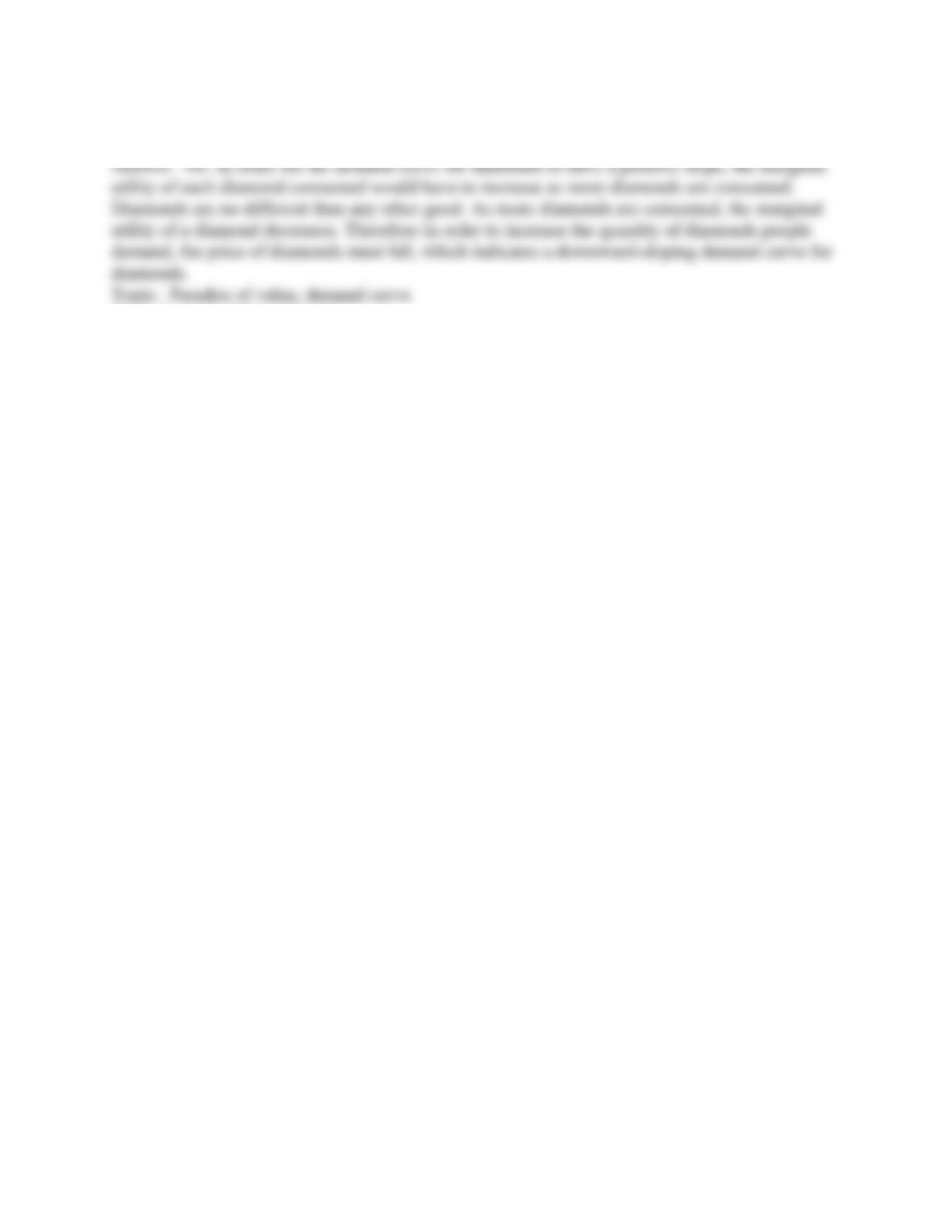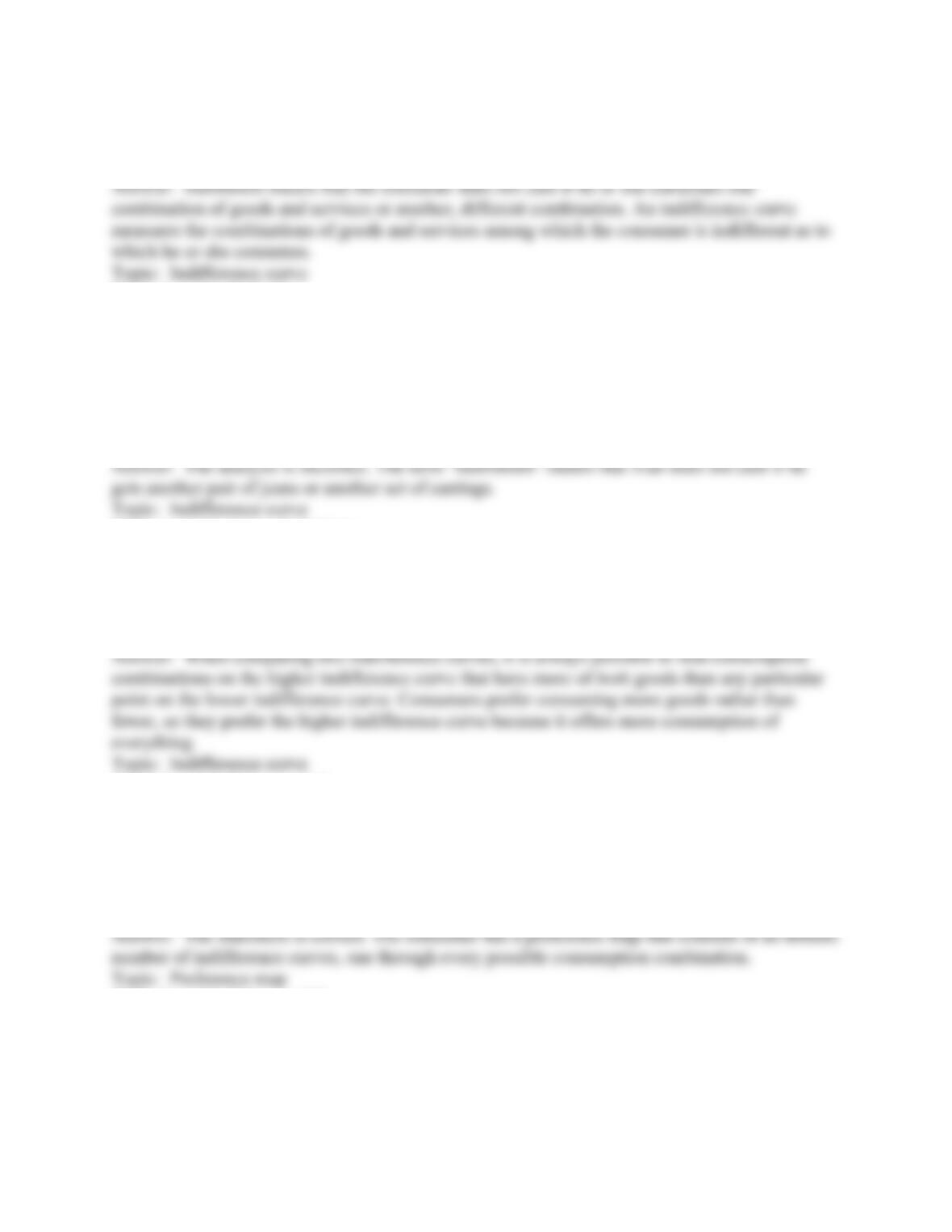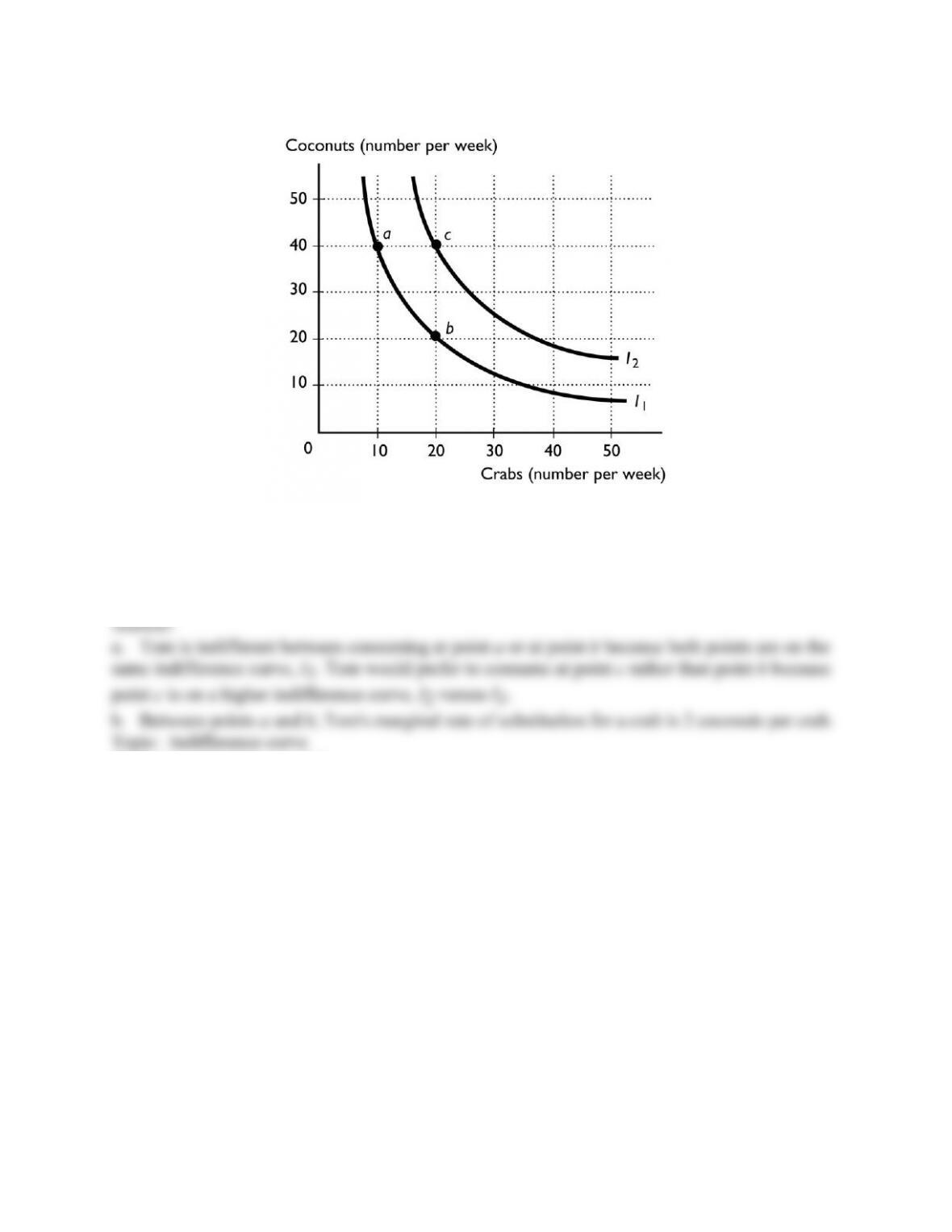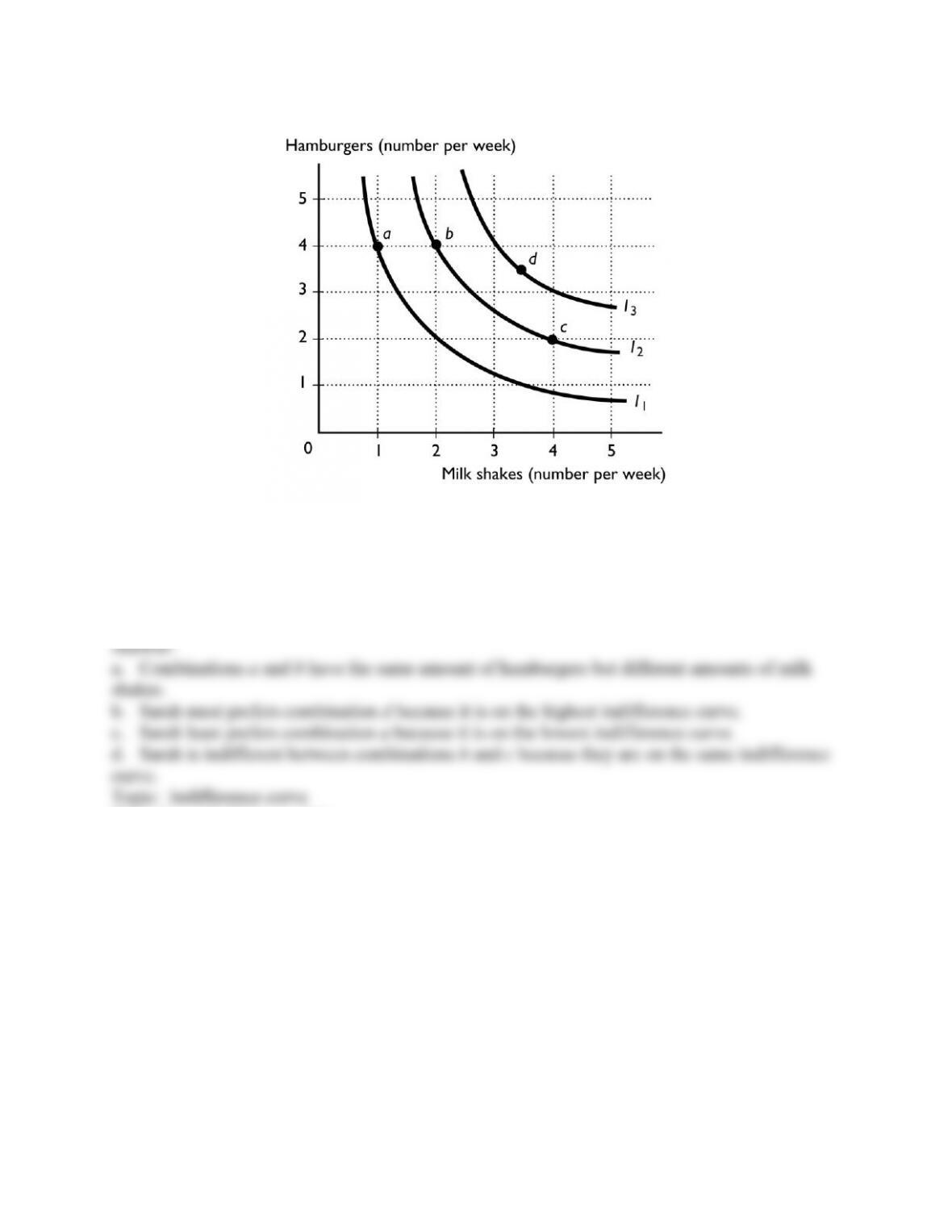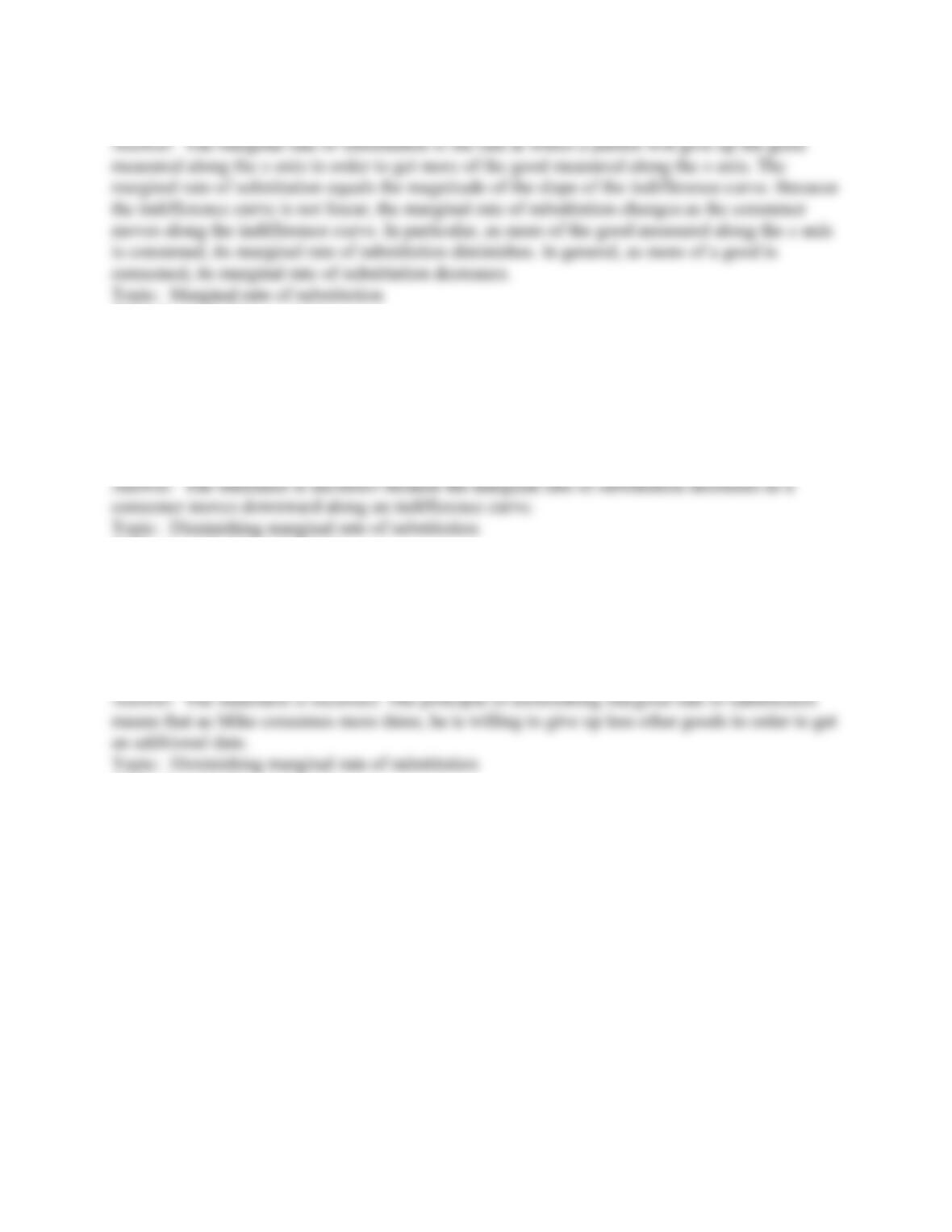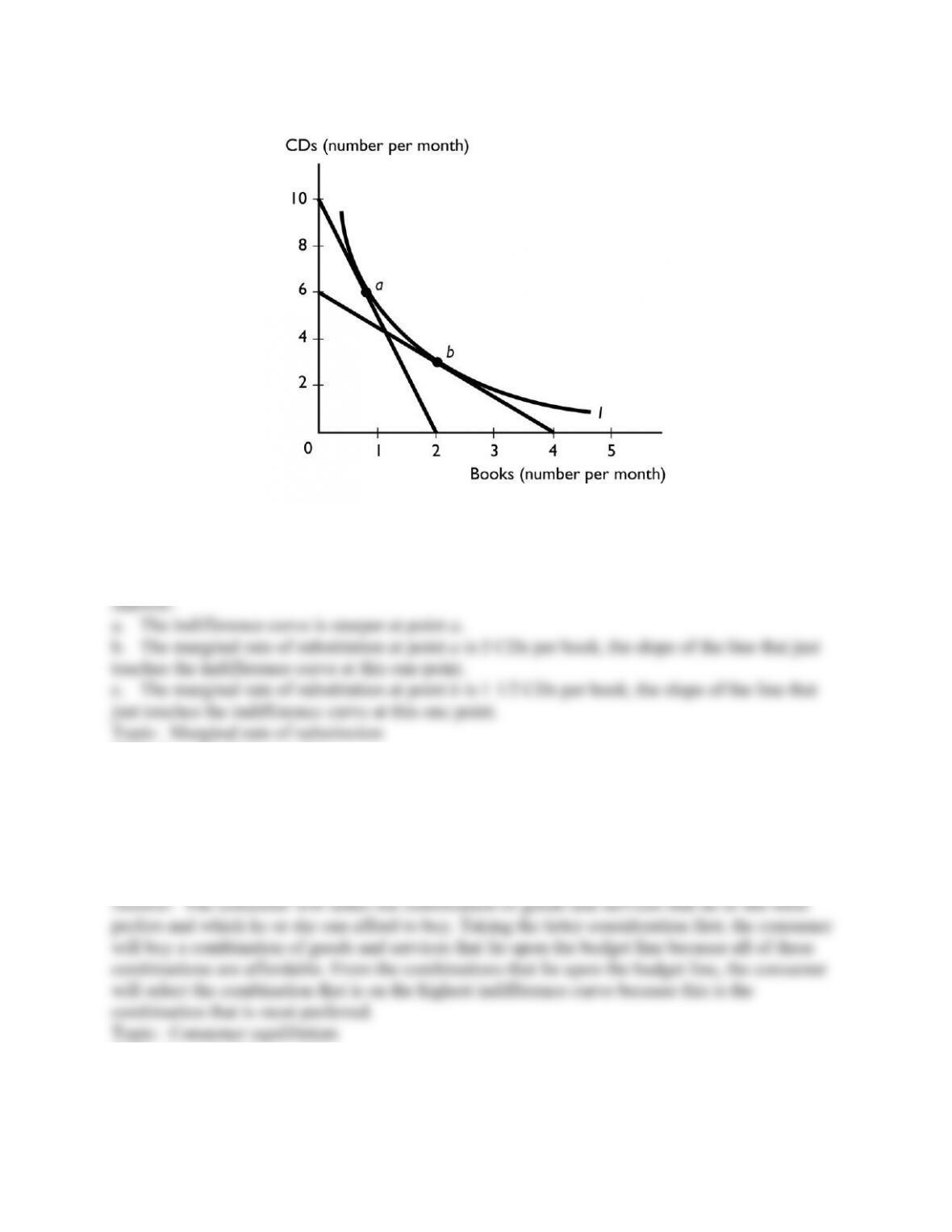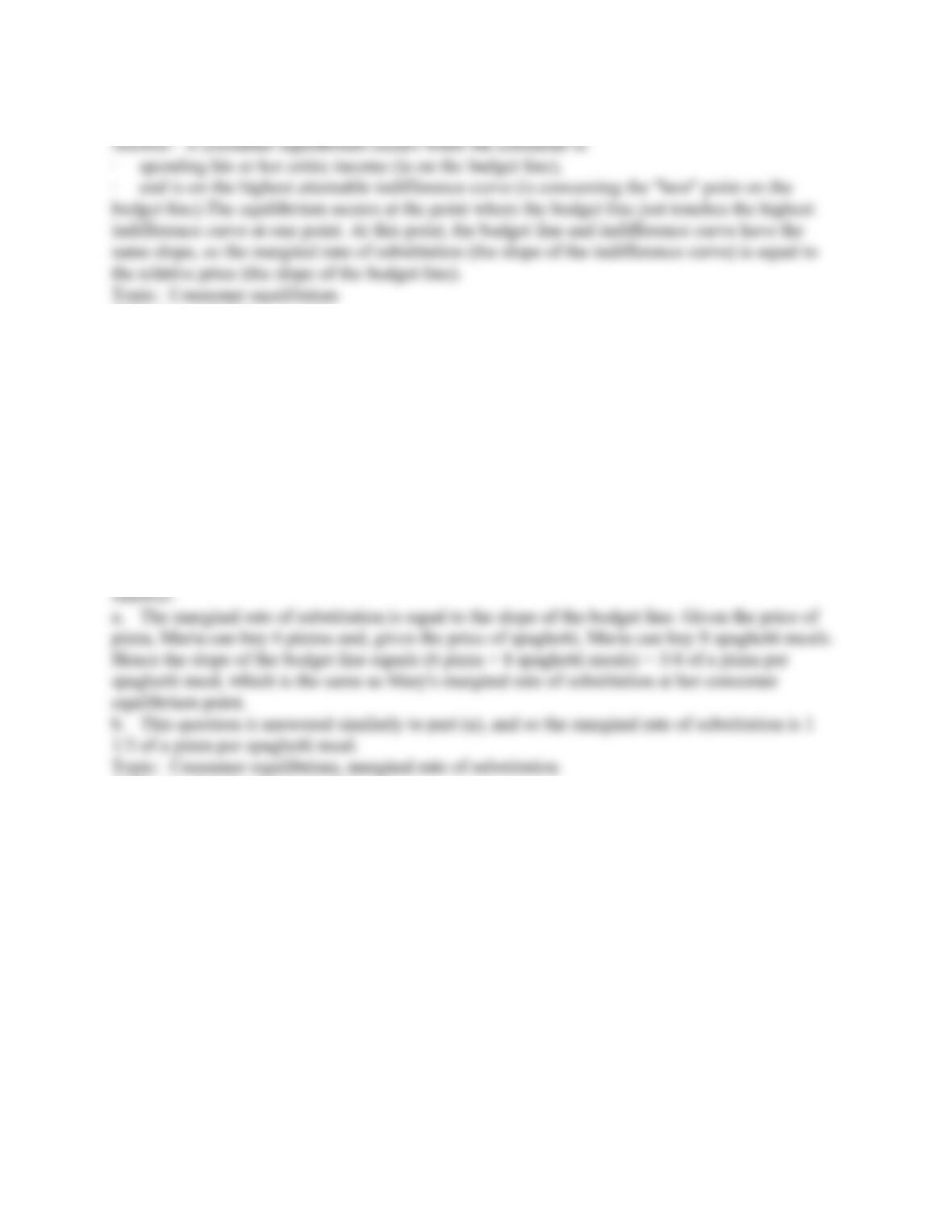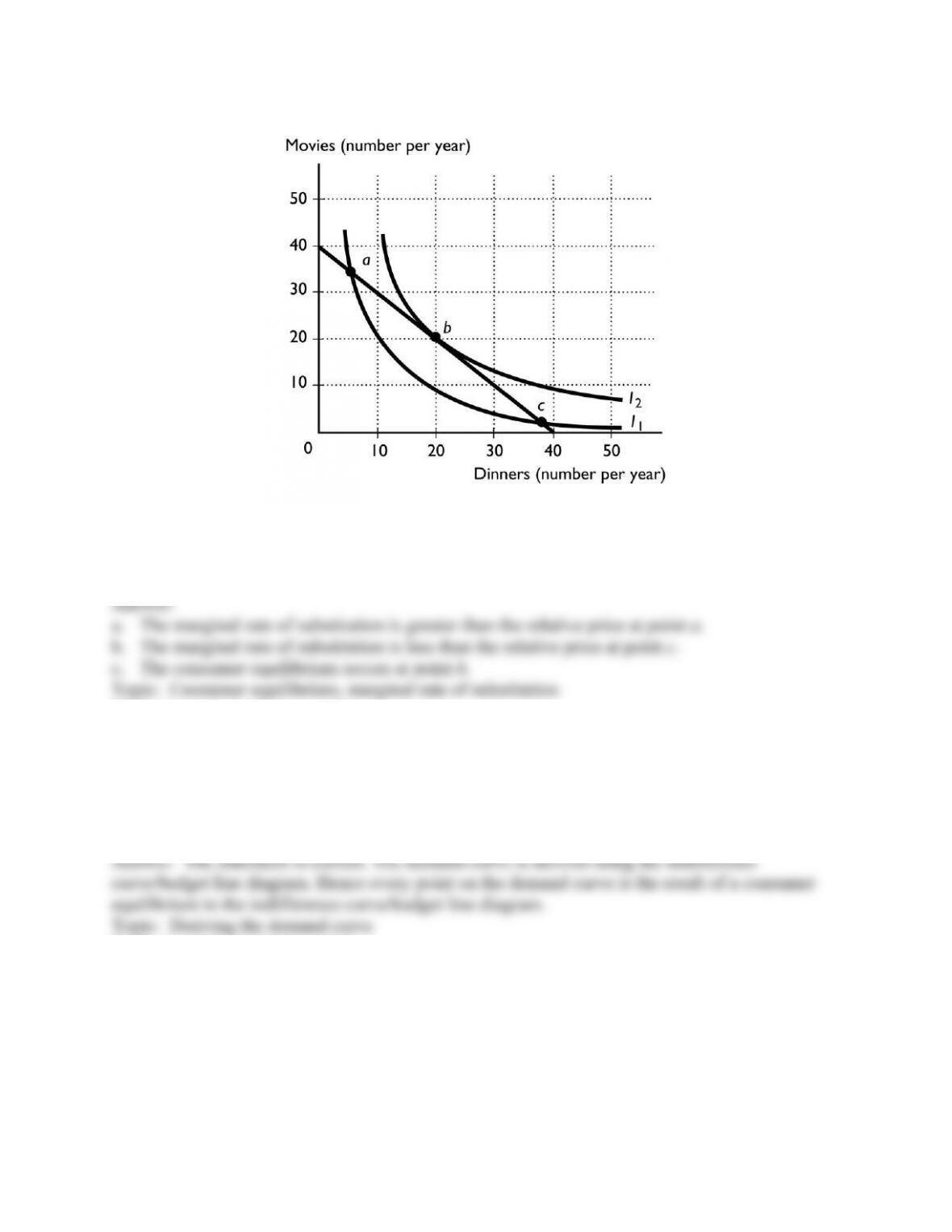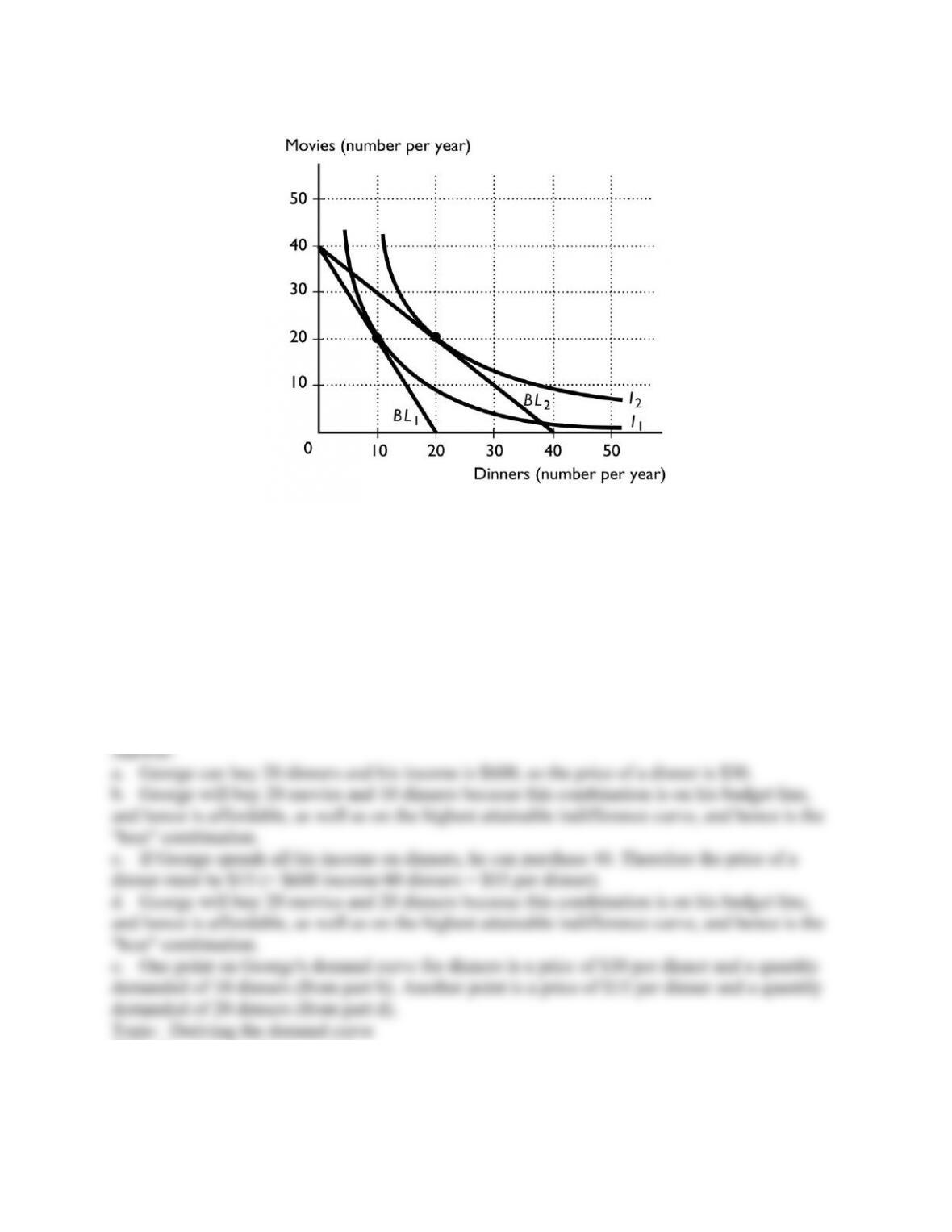39
Copyright © 2011 Pearson Education, Inc.
40) Sheryl is maximizing her utility. She notices that her marginal utility from the last package
of bubble gum consumed is greater than her marginal utility from the last package of mints
consumed. This result means that the
A) price of a package of gum is greater than the price of a package of mints.
B) price of a package of mints is greater than the price of a package of gum.
C) total utility of gum must be falling as more gum is consumed.
D) total utility of mints must be falling as more mints are consumed.
E) More information is needed which, if any, of the above answers is correct.
Skill: Level 3: Using models
Section: Checkpoint 12.2
Author: SA
AACSB: Analytical reasoning
41) Assume you are in a store looking at a shirt you want. You expect to buy the shirt until you
look at the price, then you decide the shirt is not a good buy. How can your decision be viewed
in economic terms?
A) The shirt's marginal utility divided by price was too low compared to other goods.
B) The shirt has zero marginal utility for you.
C) The opportunity cost of the shirt was too low.
D) The shirt's marginal utility divided by price was too high compared to other goods.
E) None of the above answers is correct.
Skill: Level 3: Using models
Section: Checkpoint 12.2
Author: TS
AACSB: Analytical reasoning
42) In a month, Samantha consumes the quantity of lobster dinners so that her marginal utility
from a lobster dinner is 500 units. The price of a lobster dinner is $25. She also is consuming the
quantity of spaghetti dinners so that its marginal utility is 300 units, while its price is $15.
Samantha is allocating her entire budget. What should she do to maximize her total utility?
A) consume more lobster dinners and fewer spaghetti dinners
B) consume more spaghetti dinners and fewer lobster dinners
C) consume the current combination of lobster and spaghetti dinners
D) consume fewer lobster dinners and fewer spaghetti dinners
E) Not enough information is given to answer the question.
Skill: Level 3: Using models
Section: Checkpoint 12.2
Author: TS
AACSB: Analytical reasoning

























































































